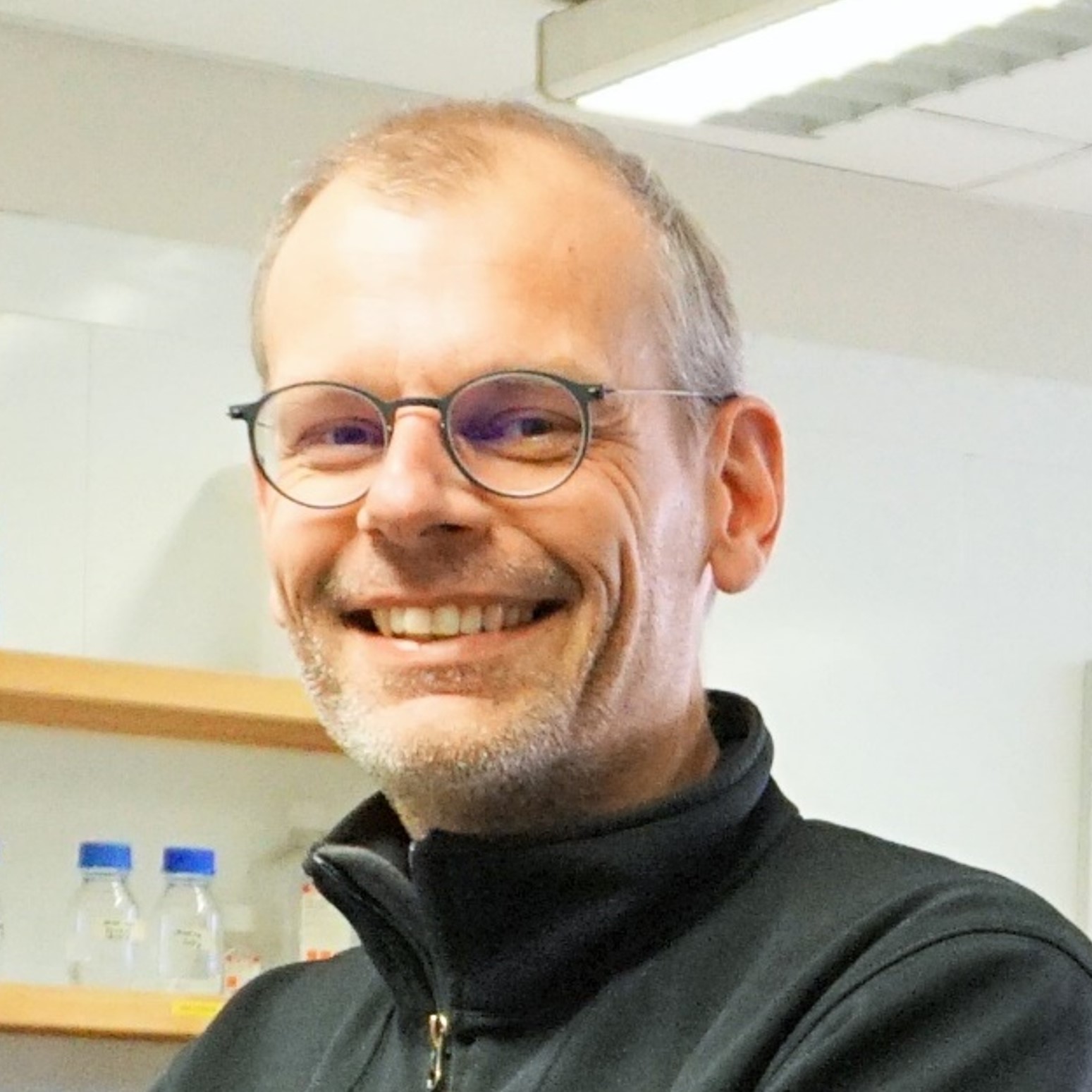Damien Hermand
Genetic regulation of gene expression
Understanding how a single genome can encode the blueprint of a complex organism with highly differentiated cell-and tissue-types
Dr. Damien Hermand PhD
UNamur, Department of medicine, Molecular Physiology Research Unit (URPhyM), Laboratory of Molecular Genetics (GeMo)
Research portal UNamur | ORCID | ResearchGate | LinkedIn
Expertise and research interests
The generation of specific cell types depends on spatial and temporal regulations of gene expression. Among the three RNA polymerases, the RNA polymerase II (Pol II) is the enzyme responsible for the synthesis of messenger RNA and most small RNAs in eukaryotic cells. Studies over decades have revealed many aspects of its subunits composition, structure and enzymatic activity. They also revealed that many steps in gene expression initially viewed as independent are intricately coordinated in a regulated network and that the central coordinator that couples together this regulatory network is a simple tandem iterated sequence: the C-terminal domain (CTD) of the largest subunit of Pol II, Rpb1. The CTD comprises heptad repeats of a conserved YSPTSPS consensus sequence that serves as a dynamic surface for the recruitment of proteins required for co-transcriptional mRNA processing or histone modifications. Timely recruitment of mRNA processing factors is ordered based on modifications within the heptad. Five of the seven residues can be phosphorylated or glycosylated and the proline residues can exist in both of the cis or trans stereoisomeric states. The resulting combinatorial complexity of the modification pattern is referred to as the CTD code, although its biological meaning is still to be explored. Best characterized are the changes in the CTD serines phosphorylation pattern during transcription, which are both temporally and functionally coupled to the association of RNA processing complexes. Therefore, the RNA polymerase II, rather than being the executing engine of gene transcription, functions as a central processor integrating and processing a wealth of environmental cues. In the lab, we use fission yeast to understand how modifications of the RNA polymerase II CTD are regulated during cell differentiation.
Group members
Postdoc: Dr. Carlo Yague-Sanz
PhD students: Pauline Ponsard, Pauline Tricquet and François-Xavier Stubbe
Selected publications
Yague-Sanz C, Migeot V, Larochelle M, Bachand F, Wéry M, Morillon A, Hermand D. Chromatin remodeling by Pol II primes efficient Pol III transcription. Nat Commun. 2023 Jun 16;14(1):3587.
Finet O, Yague-Sanz C, Krüger LK, Tran P, Migeot V, Louski M, Nevers A, Rougemaille M, Sun J, Ernst FGM, Wacheul L, Wery M, Morillon A, Dedon P, Lafontaine DLJ, Hermand D. Transcription-wide mapping of dihydrouridine reveals that mRNA dihydrouridylation is required for meiotic chromosome segregation. Mol Cell. 2021 Nov 15:S1097-2765(21)00953-9.
Cassart C, Yague-Sanz C, Bauer F, Ponsard P, Stubbe FX, Migeot V, Wery M, Morillon A, Palladino F, Robert V, Hermand D. RNA polymerase II CTD S2P is dispensable for embryogenesis but mediates exit from developmental diapause in C. elegans. Sci Adv. 2020 Dec 9;6(50):eabc1450.
Candiracci J, Migeot V, Chionh YH, Bauer F, Brochier T, Russell B, Shiozaki K, Dedon P, Hermand D. Reciprocal regulation of TORC signaling and tRNA modifications by Elongator enforces nutrient-dependent cell fate. Sci Adv. 2019 Jun 19;5(6):eaav0184.
Yague-Sanz C, Hermand D. SL-quant: a fast and flexible pipeline to quantify spliced leader trans-splicing events from RNA-seq data. Gigascience. 2018 Jul 1;7(7).
Fauquenoy S, Migeot V, Finet O, Yague-Sanz C, Khorosjutina O, Ekwall K, Hermand D. Repression of Cell Differentiation by a cis-Acting lincRNA in Fission Yeast. Curr Biol. 2018 Feb 5;28(3):383-391.e3.
Yague-Sanz C, Vázquez E, Sánchez M, Antequera F, Hermand D. A conserved role of the RSC chromatin remodeler in the establishment of nucleosome-depleted regions. Curr Genet. 2017 May;63(2):187-193.
 NAmur Research Institute for LIfe Sciences
NAmur Research Institute for LIfe Sciences


